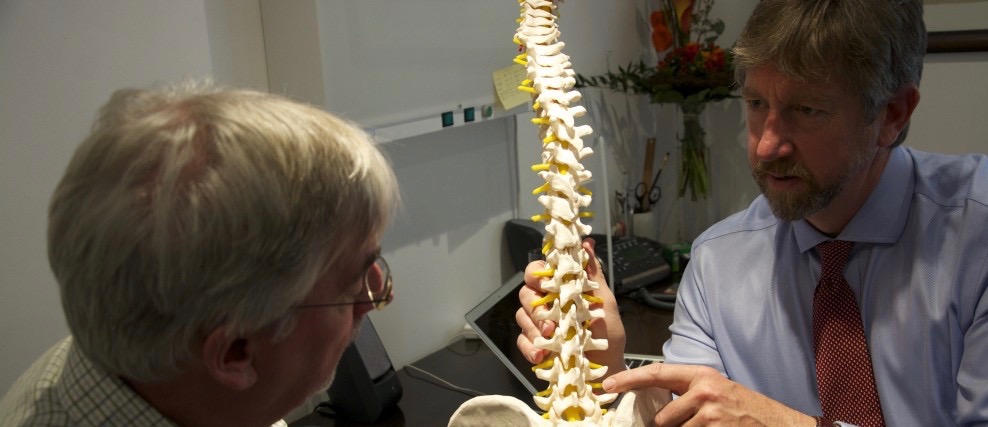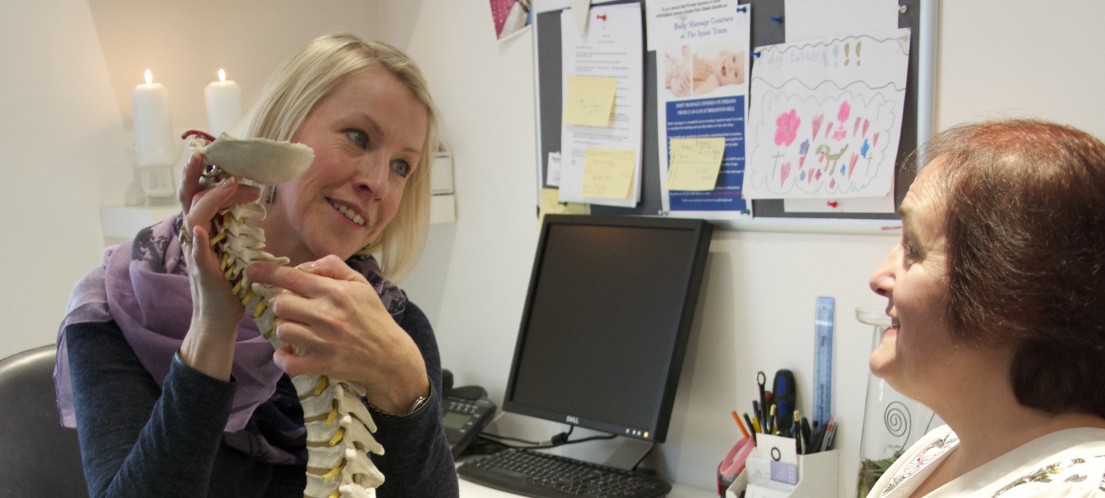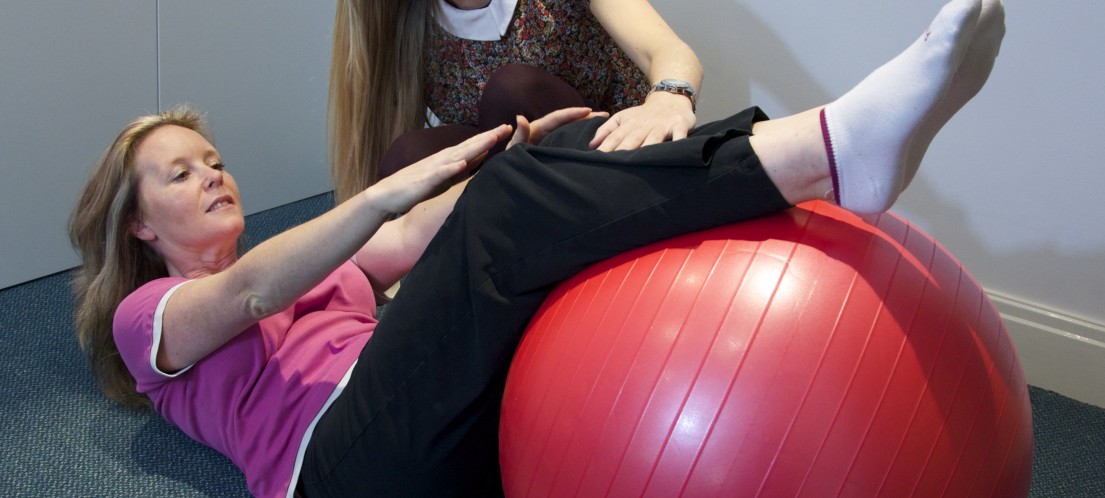What is Back Pain
Back Pain and Neck Pain are in the group of conditions that cause more time lost from work than any other problem, understanding what is wrong is the best way of overcoming your pain and at The Spine Team we aim to help you and help you help yourself
What Is Back Pain
More time is lost from work due to Musculo-skeletal conditions of which Back Pain, including Neck Pain, are by far the most commonly suffered. Many assumptions are made about back pain and the generic terms such as Lumbago, Slipped Disc, Sciatica and Trapped Nerves make it easy to explain to someone who asks “What is wrong with your back?”. Equally frustrating can be the reported result of imaging, X-Rays or Scans, using terms such as Bulging Discs, Spondylosis and more bizarrely “Cumbling Spine”, which implies a very morbid condition but probably is no worse than normal wear and tear, and most spectacularly imaginative of all “A Bone Out of Place” as though a spinal segment needs to be ‘pushed back’ with the inevitable outcome that all ills will be resolved. While these terms are accepted into our language such terminology is not helpful in actually understanding what is happening and how to overcome it.
Most back pain, between 97% and 98%, is not serious, however it can be very painful and very frightening if you do not know what is going on!
Very occasionally we see back pain caused by serious illness or injury but there is no correlation between pain and severity. More about this later.
History
For many years back pain was regarded as a straightforward ‘injury’ that occurred at the onset of the pain, it was then assumed that this ‘injury’ should ‘heal’ and if treatment is necessary then it should ‘cure’ the problem for good. Once the MRI scans became available, in about 1987, it was assumed that they would show this ‘injury’.
There was, parallel to this, the use of models based on the treatment method of manipulation, clearly discernible movement on treatment implied a purely positional ‘correction’ to spinal alignment and the philosophy of a “bone out of place” or a treatment which tried to “get the bone off the nerve” lead to patients believing in the positional model and wanting their “back put back in”.
While this latter model is simple and supports the patient’s experience studies through the 1980s showed there was no correlation in the position of the bones and the pain suffered and while certain conditions do involve a translational movement away from the ideal (movement across the body either forwards, backwards or sideways) these are not changed by manipulation.
In respect of the former model by 1999 enough studies using MRI scans had been published both on the differences on people with back pain those without, and on subjects before, during and after episodes of pain, to show that this was not the case. The research suggested that for between 85% and 90% of cases of low back pain there is no evidence any ‘injury’ or indeed any explanation for the pain at all; by 2008 the International forum for Primary Care Research on Low Back Pain abandoned the ‘Injury Model’ as an explanation for most episodes of back pain.
To help explain, let’s use an example, with a sprained ankle an ‘injury’ occurs, tissues are stretched beyond their limit and you would see bruising where the damaged tissues bleed and swelling where the body’s recovery plan is put in place. It is very rare to see any bruising associated with a new episode of back pain and while swelling may occur it is too deep and too small to assess, even on the best available scans.
What Causes Back Pain
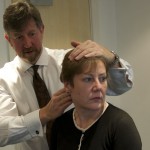 So having abandoned the ‘Injury Model’, on the basis that there is no evidence for it, we have to use another explanation for back pain. Most of the workings of the spine, the mechanical part, is on the outside of the spine, this includes the joints that sense and co-ordinate movement, these are known as the ‘Facet Joints’. Research has shown that these are important in sensing position and load and have the capacity to recruit muscular support to help regulate movement and support load. It has been suggested that it is the failure of this system that causes most back pain, so called ‘Mechanical Back Pain’.
So having abandoned the ‘Injury Model’, on the basis that there is no evidence for it, we have to use another explanation for back pain. Most of the workings of the spine, the mechanical part, is on the outside of the spine, this includes the joints that sense and co-ordinate movement, these are known as the ‘Facet Joints’. Research has shown that these are important in sensing position and load and have the capacity to recruit muscular support to help regulate movement and support load. It has been suggested that it is the failure of this system that causes most back pain, so called ‘Mechanical Back Pain’.
Why Does It Hurt So Much
For anyone who has had back pain being told that there is no evidence of damage is of little consolation, they need an explanation for their pain experience.
Research has shown that in a male adult the compressive force that the lower back muscles can generate could be as much as 6000N; Newtons (N) are a unit of force, one kilogram (kg) requires approximately 10N to hold up against gravity. What that actually means is that the muscles of the back can create a compressive force equivalent to carrying 600kg.
The model we use at The Spine Team for an acute episode of back pain suggests that some, or potentially all, of this available force is exerted in an effort to stabilise the spine at the onset of pain. It is quite likely that the episode was caused by an incident, but that incident is very often trivial, we also know that no damage is seen on scans so it is the sudden compressive spasm that causes the pain. Just imagine placing such a load (half the weight of a small car) on your foot!
Why are the muscles so powerful
The answer is ‘Leverage’. Let’s say that an average man weighs 80kg and half of that, 40kg, is supported by the base of the spine. The muscles around the mechanics of the spine are on average about 5cm behind the centre of bending movement in the disc (the fulcrum). When 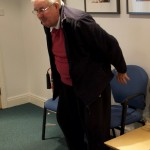 you bend forward to lift 10kg of shopping out of the boot of the car the distance from the fulcrum (at the centre of the disc) to the furthest point of the shopping could be 90cm. If the shopping and the body weight are combined and evenly spread over the 90cm then the load is 50kg at an ave
you bend forward to lift 10kg of shopping out of the boot of the car the distance from the fulcrum (at the centre of the disc) to the furthest point of the shopping could be 90cm. If the shopping and the body weight are combined and evenly spread over the 90cm then the load is 50kg at an ave
rage lever of 45cm. Thus a leverage ratio of 45:5 or 9:1 is the result. Therefore a compressive force at the 5cm lever equivalent to 450kg (50 x 9) is required to hold the shopping and the body weight against gravity (4500N).
It is reasonable to assume that normally this force is recruited only when needed but if it suddenly starts in a misguided effort to stabilise the pain is extraordinary, and for most relief of counterbalancing by bending forward is the only relief.
Could My Back Pain Be Serious
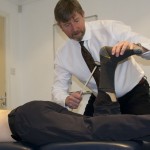 A small percentage of back pain can be serious and there are usually clear signs that something is wrong, signs which an experienced practitioner should pick up during your consultation.
A small percentage of back pain can be serious and there are usually clear signs that something is wrong, signs which an experienced practitioner should pick up during your consultation.
The more common of these, about 2% of back pain, is due to damage inside the spine, such as disc prolapse or herniation (not to be confused with disc bulging due to wear and tear, such as seen in spondylosis which is part of the raging process and not associated with pain) and we have clinical tests to identify these conditions, if we are concerned we can arrange privately or refer back to your GP for imaging, usually MRI scans.
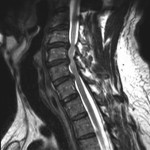 Less than 1% of back pain is due to serious spinal pathology and this is usually suspected if there are abnormal signs in the way your nerves test, you have a history of something that could affect the spine or you are unwell in another way. Usually in such cases we will refer back to your GP for blood tests and imaging, on the odd occasion we will do this as an emergency but more commonly this is done with a view to a referral from the GP to a specialist under the ‘two week rule’. There are occasions where the referral is not an emergency, for example where the spinal cord is obstructed by wear and tear, and the changes are likely to be very gradual.
Less than 1% of back pain is due to serious spinal pathology and this is usually suspected if there are abnormal signs in the way your nerves test, you have a history of something that could affect the spine or you are unwell in another way. Usually in such cases we will refer back to your GP for blood tests and imaging, on the odd occasion we will do this as an emergency but more commonly this is done with a view to a referral from the GP to a specialist under the ‘two week rule’. There are occasions where the referral is not an emergency, for example where the spinal cord is obstructed by wear and tear, and the changes are likely to be very gradual.
One of the main advantages of coming to The Spine Team is our practitioners are very experienced, Gordon and Annette have respectively 33 and 20 years experience. We ensure that any concerns that arise during your consultation are followed up but we are dependent on you giving a complete history, whether it seems relevant to you or not, of course it will always be totally confidential and concerns are communicated to your GP only after they has been explained to you and you have given permission for release of that information.
